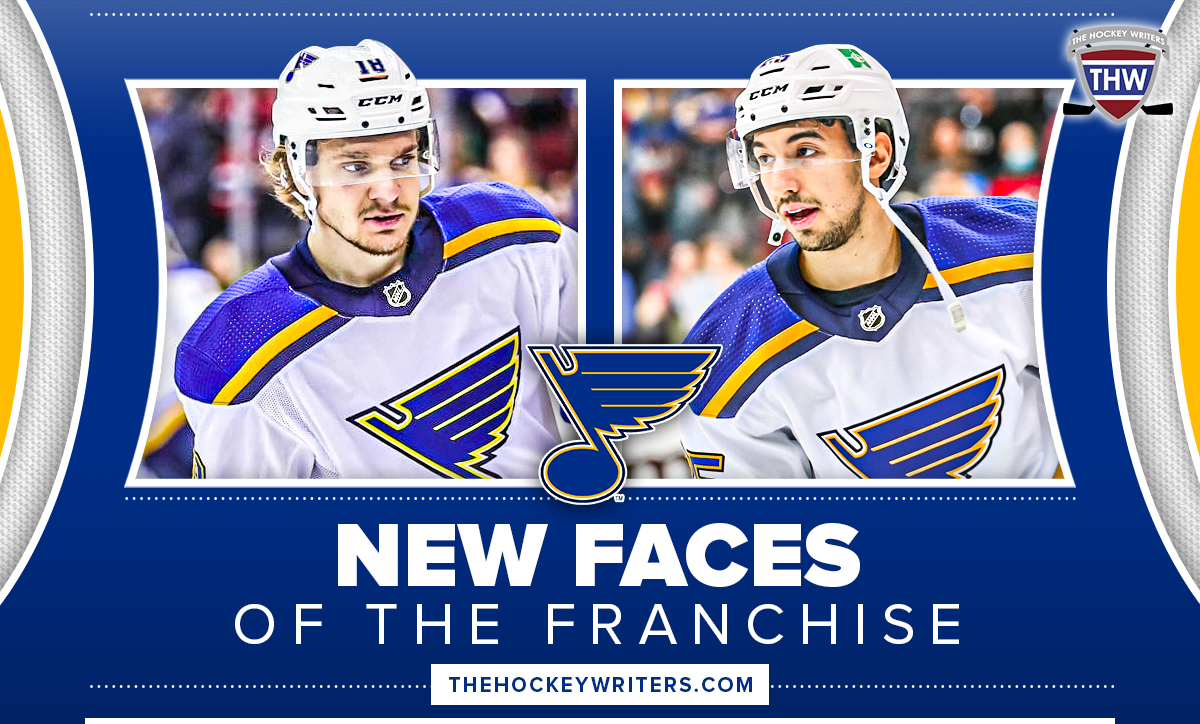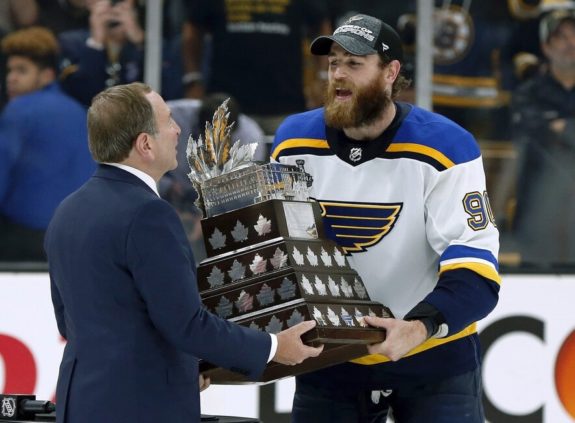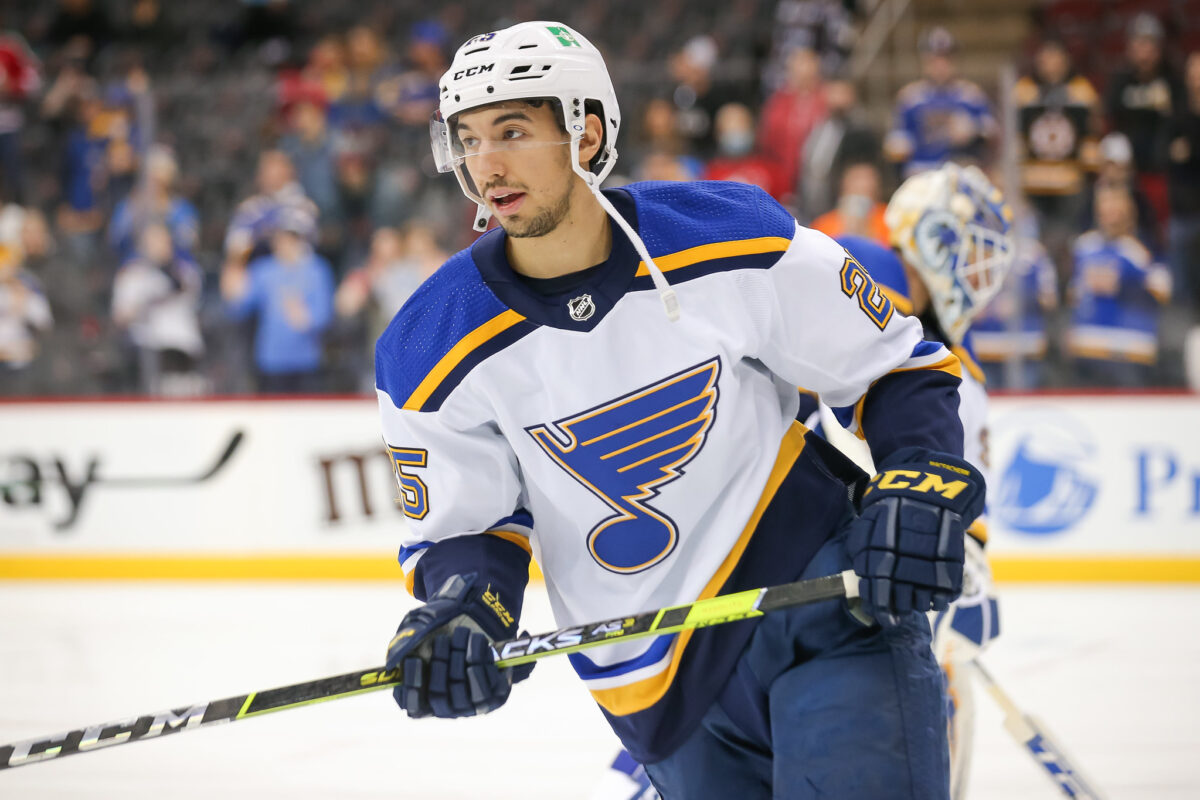The St. Louis Blues franchise has been through many franchise faces during its existence. From the inaugural team with four straight Stanley Cup Final appearances led by the Plager Brothers, the Bernie Federko-led teams of the ’80s, the Brett Hull & Al MacInnis ’90s teams, to the many faces during the Doug Armstrong era (David Backes, Vladimir Tarasenko, Alex Pietrangelo), the Blues have had no shortage of players that represent who and what the team is. I know I’ve left a few names out like Keith Tkachuk, Chris Pronger, and Pavol Demitra, etc., but that just goes to show how many special players have worn the Blue Note during their careers that are deserving of being a “Face of the Franchise.”

There’s a changing of the guard going on within the locker room. Not so quietly, the Blues are shifting from the size, power, and gritty play style that lead to their first Stanley Cup win to the faster, agile, and more skilled play style that is being adopted by many teams throughout the NHL. The extensions of Robert Thomas and Jordan Kyrou are just the beginning as this franchise looks for its new identity.
Changing of the Guard
When Tarasenko debuted for the Blues in 2012, one could argue that he’s been the de facto “face of the franchise” ever since. Even with other stars and captains in place like David Perron, Backes, Pietrangelo, Alexander Steen, and TJ Oshie, Tarasenko has generally been regarded as the team’s face to the rest of the league, culminating with him winning the vote to be on the cover of NHL 17.
Related: Blues’ Kyrou Extension Talks Bringing Clarity to Team’s Future
In 2018, when the team brought in veteran Ryan O’Reilly as the key return piece to a huge trade, he was instantly thrust into the Blues’ top line and into the spotlight as one of their core players. Tarasenko and Pietrangelo were still in place, so O’Reilly was able to operate in their shadow until he won the Conn Smythe Trophy for his Stanley Cup Playoff performance and the Selke Trophy for his stellar defensive play. After Pietrangelo left and he was named captain, O’Reilly has been the team’s leader both in and out of the locker room.
Trade Requests & Expiring Contracts
After the 2020-21 season, the shoulder injuries and subsequent surgeries, Tarasenko made it well known that he wanted out of St. Louis. While a trade never materialized and he rebounded and had an incredible season in 2021-22, the request was never officially rescinded. His current contract is set to expire after the end of the 2022-23 season, when he’ll be 31 years old at the time. It’s thought by many that the Blues intend to let him play out his contract and explore his options next summer in free agency. If he can manage another 70-80-point season, it should be easy for him to receive a substantial contract.

Like Tarasenko, O’Reilly is making $7.5 million right now and his contract is also set to expire after the 2022-23 season, where he’ll be 32 years old. Outside of a season with an outlandishly high point total, it would be difficult to see him earning another contract with that high of an average annual value (AAV). With him being the Blues’ captain and centering their top line as well as both top special teams units, it’s easier to see him returning to St. Louis after this season on a cheaper deal. It’s also entirely possible that O’Reilly, or even the Blues for that matter, see it best to part ways altogether. With their recent past of doing that with Backes, Pietrangelo, and Perron, it wouldn’t be shocking.
Fresh Faces Have Emerged
In 2021-22, the Blues had two of their young players emerge and have breakout seasons: Thomas and Kyrou. Both Thomas and Kyrou were point-per-game players last season (Thomas: 77 points in 72 games; Kyrou: 75 points in 74 games) and were key special teams players for St. Louis. Their chemistry on the ice is evident and is supported by the fact that they have great off-ice chemistry as well.
Earlier this summer, just as free agency was getting underway, the Blues made headlines by announcing they’d re-signed the 23-year-old Thomas to an eight-year, $65 million extension — the largest contract in franchise history. It was at that point that the organization signaled that they will be building their team around the young center going forward. With Thomas being a restricted free agent (RFA) after 2022-23, an extension was looming, so it was a matter of “when,” not “if” a deal would happen. The fact that it was that substantial of a deal proves that the team is betting big on his future, both as a top-line player and as a leader.
Related: Blues’ Ripple Effects from Kyrou & Thomas Extensions
The next pending 2023 RFA the team needed to focus on was 24-year-old winger Kyrou. It had been reported that the two sides had been engaging in extension talks and that the conversations were going very well. On Sept. 13, the team announced that it had extended him to an eight-year, $65 million contract, mirroring the deal that they inked Thomas to in July. In doing so, they linked the two together in St. Louis for the next eight seasons. In one offseason, general manager Doug Armstrong handed out the two largest deals in Blues history and made them both the building blocks for every team going forward.
Building Around Kyrou & Thomas
As things stand right now, once the 2022-23 season concludes, key veterans and franchise stalwarts Tarasenko and O’Reilly will be unrestricted free agents (UFA). With the team having already committed $67,550,000 for 2023-24 (including the Thomas and Kyrou extensions), other players potentially due for a raise (Scott Perunovich, Ivan Barbashev, Niko Mikkola), and the salary cap projected to rise $1 million (maybe a little more) in the 2023 offseason, the Blues are going to need to decide how to approach building this team around their two emerging stars.

When it comes to Tarasenko and O’Reilly, the Blues will likely have to make a choice between the two as to which one to keep, if at all. Another strong Tarasenko season likely means he’s going to be seeking a multi-year deal in excess of $7 million AAV. At that rate, he’s going to be out of the team’s price range. It’s been rumored for a while that his preferred destination is that of an East Coast contender, so we may see that come to fruition next summer if not sooner.
At 32 and being less of a goalscorer, O’Reilly should be able to be brought back at a lower AAV, possibly somewhere in the $5 million range. If that’s the case, Armstrong’s next move should be to begin extension talks with the team’s captain and his agent to keep him in St. Louis for the next three to five years.
Related: Blues 2022-23 Season Preview
As salaries begin to rise around the league, time will tell if the matching $8.125 AAV given to both Thomas and Kyrou will be looked at favorably or not. What these signings do indicate is a changing of the guard in St. Louis that gives the fanbase and the rest of the NHL two new faces to represent this team and its direction.